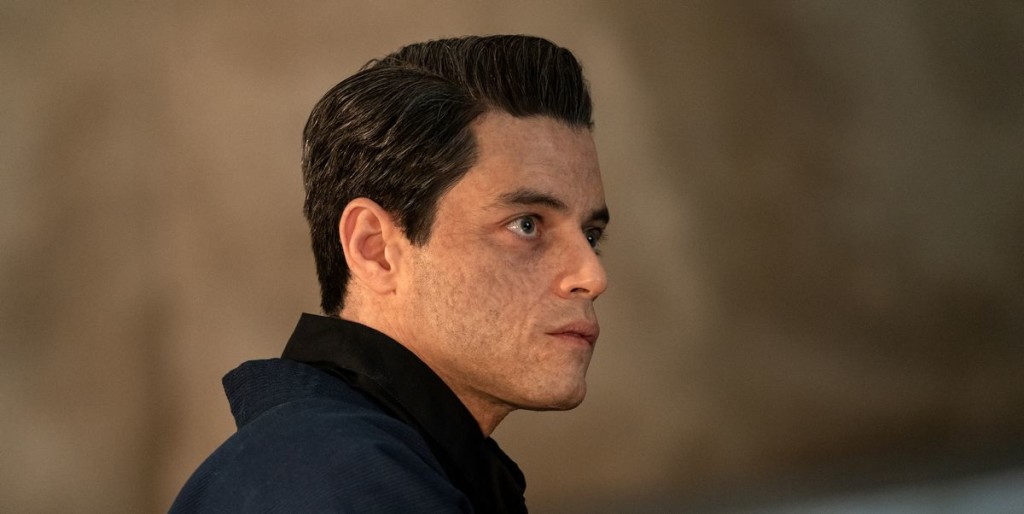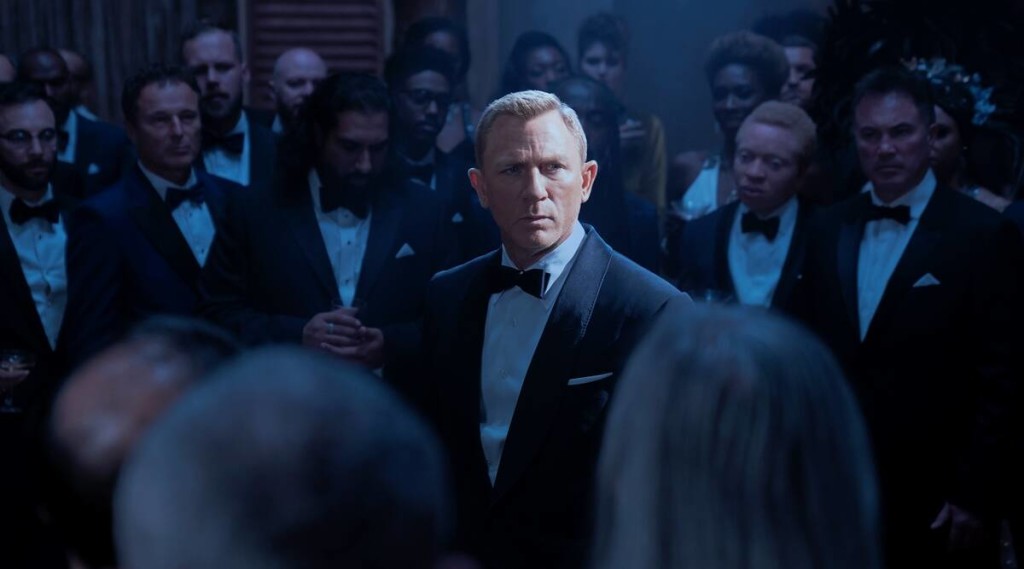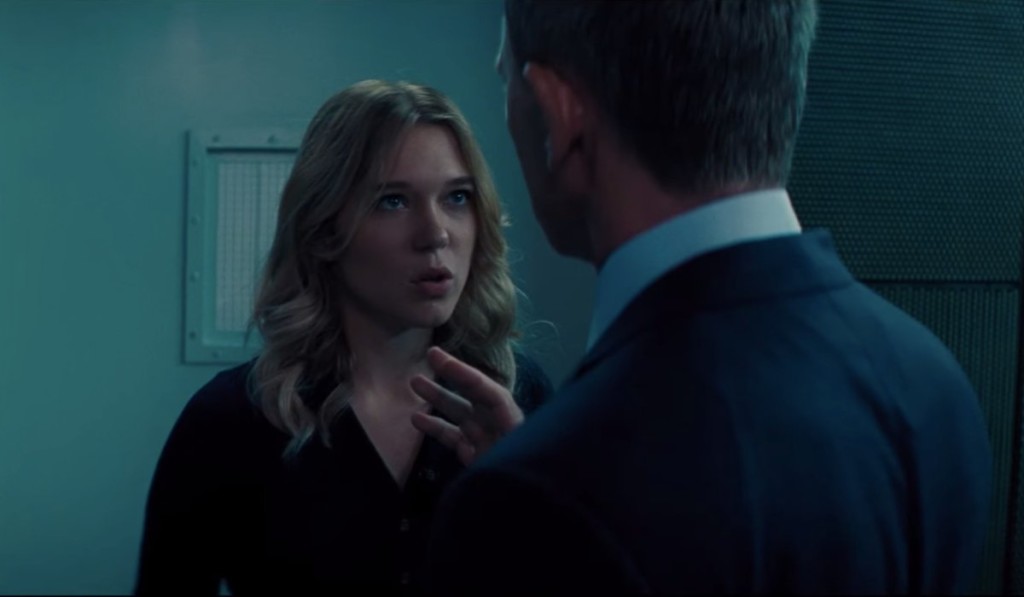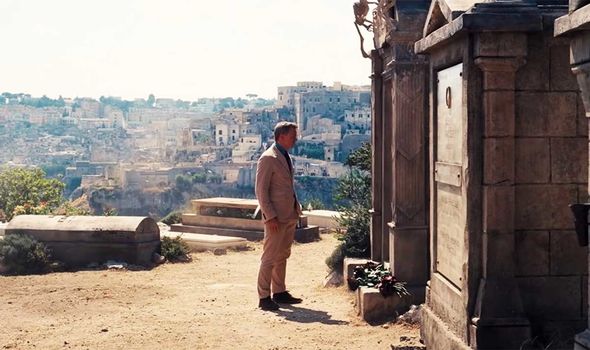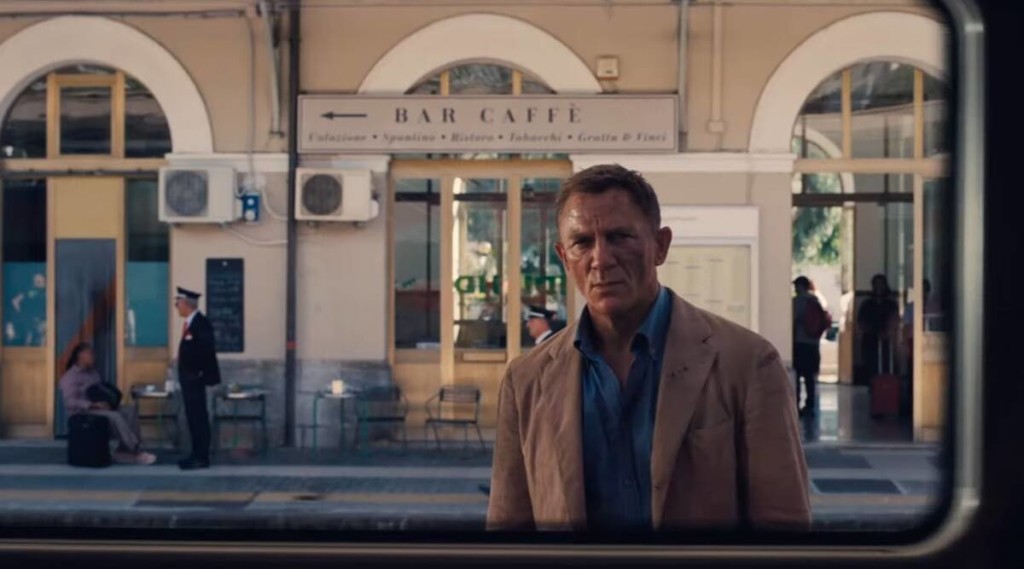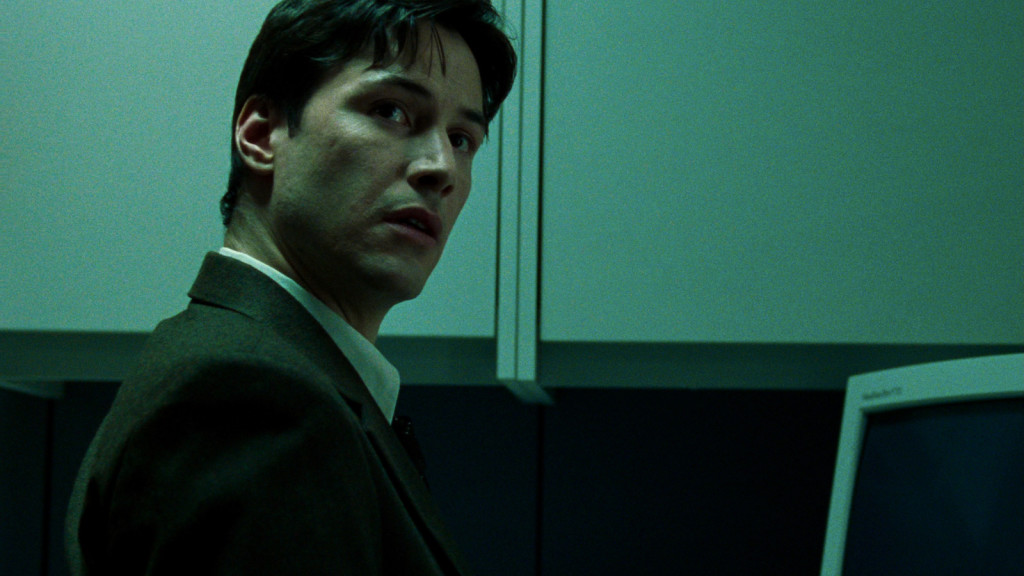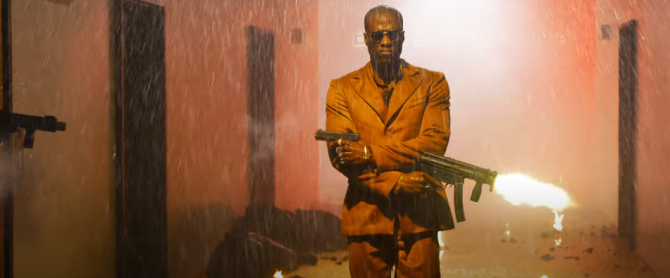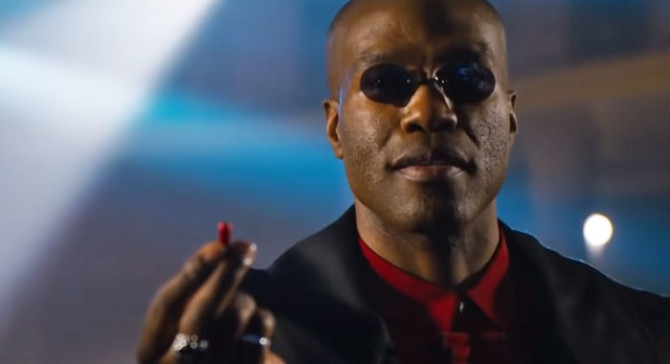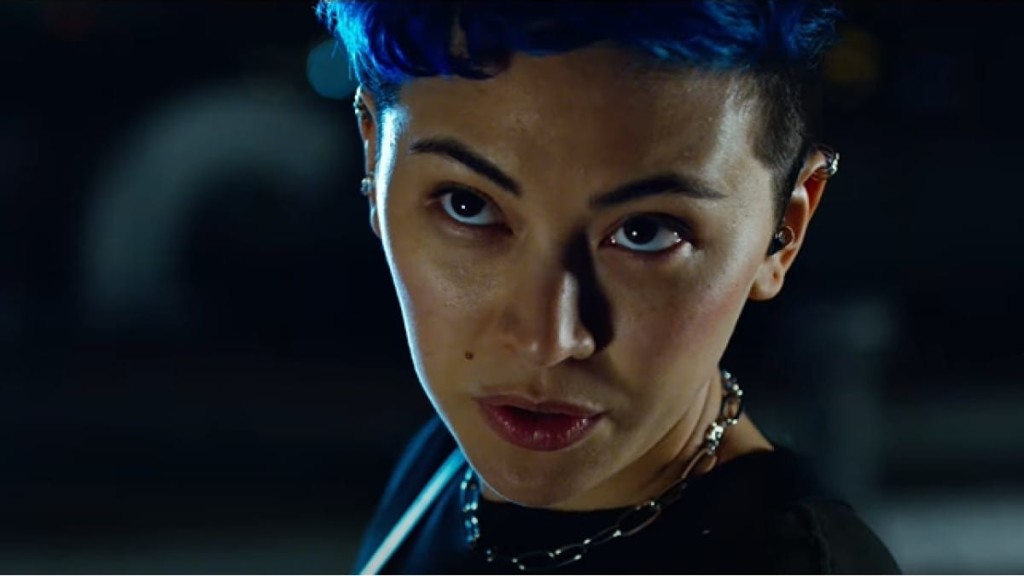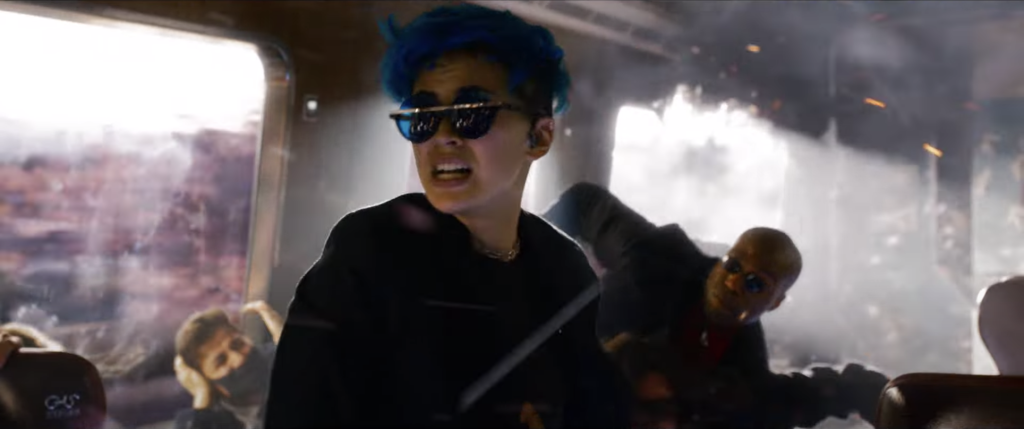Search Results for: James bond
Genre: Art Heist/Thriller
Premise: An art thief who takes priceless objects from museums and private collections and redistributes them to their original countries of ownership is tracked by a dogged FBI Agent across the globe.
About: This script finished top 30 on last year’s Black List. Writer Ola Shokumbi recently adapted a book for the upcoming animated movie, “Onyeka and the Academy of the Sun,” that will appear on Netflix. Will Smith is producing. She also wrote one episode of the show, “The Fix.”
Writer: Ola Shokunbi
Details: 109 pages
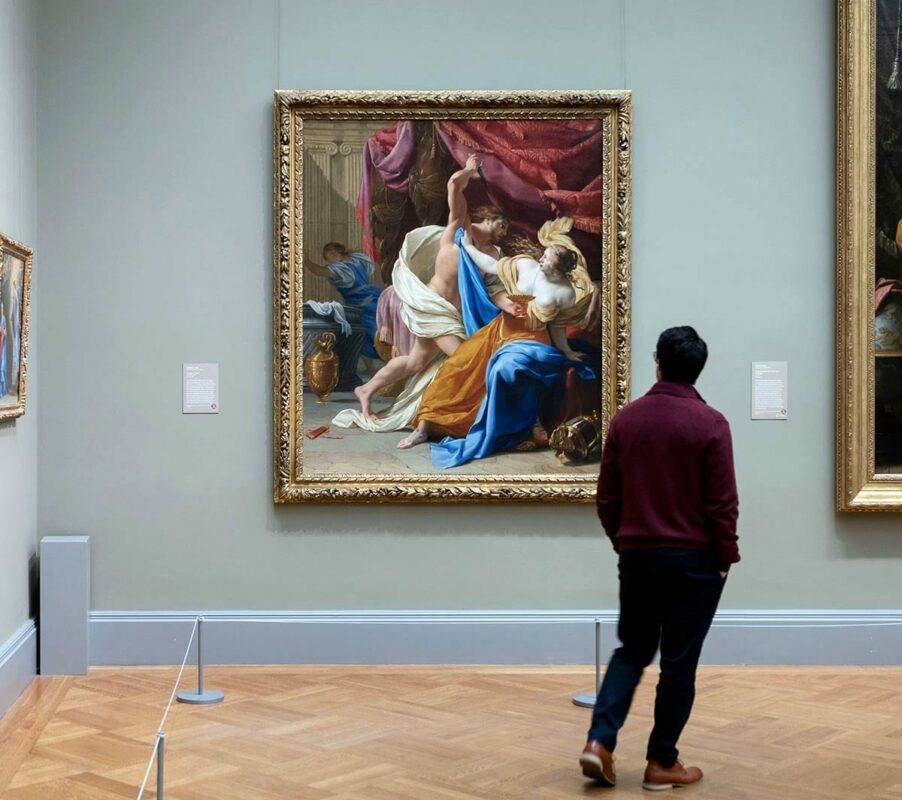
Can today’s script reinstate confidence in the Black List?
If not, can we at least find a new writer with a fresh voice? Someone to get excited about?
I’m always down for a cool art heist script but these are tricky. The genre is well-traveled and, therefore, difficult to be original in.
Let’s see if today’s writer has come up with something cool.
The art thief known as “Ghost” steals art from random museums across the world. But unlike these greedy bastards who sell their stolen art to the highest bidder, Ghost sends the art right back to its country of origin. I’m not clear on how she makes enough money to, you know, fund this expensive hobby. But maybe she gets paid in moral superiority.
Halfway across the world, at an FBI office in America, is Ghost’s rival, Pire. Well, she doesn’t know he’s her rival yet. But she’s about to. You see, Pire has been tracking Ghost’s European museum escapades and he’s come up with a theory. She’s coming to America! Or *he* is coming to America. Nobody yet knows that Ghost is female. They merely assume she’s male cause of their internal patriarchal biases.
Long story short, Pire blows catching her, and Ghost, who we’re now told has instituted a name change (you can call her “Indigo”), flies a plane to France because I guess in between late night museum robbings, she learned how to become a pilot. Once back in Europe, her true plan is revealed. She’s trying to find a mythical lamp that is said to have the power to “raise an army.”
Her mark is a man named Walter, a sort of “sinister Indiana Jones” type, who is said to have the lamp. But Ghost – I mean Indigo – falls in BFF love with Walter’s assistant, Nooria. Nooria, you see, is Walter’s operations manager. She makes it so Walter can easily rob all these caves around the world.
Indigo points out to Nooria that she’s a prisoner, much like how art is a prisoner when it is inside the museums of a country where it did not originate. From here, “Indigo” turns into a full-on globetrotting action movie with vespa chases through the streets of Milan. We will find out, when this is all over, that Indigo played everyone like a fiddle, executing the most intricate plan in the history of the world, which should set her up for 20+ years of additional adventures.
One thing I can never forgive, no matter how hard I try, is when the concept itself is faulty. Work through this with me because I’m struggling to understand it. Let’s say you steal a painting from an American museum that originally came from an Italian painter from the 1700s. So you then “give it back” to Italy.
Who, in Italy, takes responsibility for this painting that was stolen and then “returned” to them? The Italian president? The Commissioner of Art? And what do they do with it when they get it? Do they send an “lol” tweet to the US government then put the painting up in one of their own museums?
We are operating under reality here, are we not? If so, doesn’t that mean the painting will have been the property of that museum? In which case lawyers are going to get involved and eventually litigate that painting back to the United States. That’s assuming Italy didn’t just send the painting right back to the museum in the first place. No government is going to publicly accept a stolen piece of art.
This is why in all the art-theft movies preceding this one, it’s a criminal stealing the art. Or a thief stealing art for a crime lord type. Because that avoids the problem “Indigo” has. If you’re a criminal, you can hide your act of crime. There isn’t a scenario where a government is going to have to publicly accept a stolen museum piece unless we’re talking two countries that specifically hate each other, which wasn’t the case with this movie.
It sounds pretty when you say it – a thief who steals art from museums and returns it to their country of origin – but it doesn’t make a lick of sense.
Strangely, just as you’re wrapping your head around that and deciding if you can buy into it enough to mentally commit to the screenplay, the movie changes gears and becomes James Bond. None of it is bad. I could imagine this movie looking pretty good if someone spent 150 million dollars on it.
But my criteria for any action movie is: Are you giving me things I haven’t seen before? Because when you’re writing a movie that costs this much money, you are placing your film in one of the most high-stakes competitive spaces in all of art – the blockbuster film. To stand out in that arena, you have to show us stuff we haven’t seen before.
For example, there’s a scene where Indigo is on a moving train and the cops are closing in on her and she heads up to the top of the train, activates a parachute on her back, that then extends backwards due to the wind, lifting her up into the air to safety. I don’t know if I’ve seen that exact scene before. But I’ve seen a thousand moments that are achingly similar to it.
I will cut action films some slack in this area if they give me a great hero. Like I always say, you should be spending tons of time on creating a great protagonist because they’re going to be in every scene. Therefore, if we like them, we’re going to like every scene. But I found Indigo to be arrogant and too cool for school. She was always 15 steps ahead of everyone so she never sweat. Therefore we were never worried for her.
Go through that opening scene in Indiana Jones and tell me that Indiana didn’t sweat. Literally every single obstacles nearly killed him. Yet Indigo could’ve touched up her make-half the times she was pursued. That’s how little danger she was in.
The Black List needs to be careful. When you hear those words – The Black List – you now associate them with “competent” rather than the word you used to use, which was “good.” It’s not the worst thing in the world to be competent. Competency is still hard to achieve in screenwriting. But a list’s job should be to get you excited about the items that are on that list. And The Black List isn’t doing that at the moment.
[ ] What the hell did I just read?
[x] wasn’t for me
[ ] worth the read
[ ] impressive
[ ] genius
What I learned: Dramatic irony is when the audience has more information than at least one of the characters on screen. Usually, that information will imply a negative outcome for that character. There are two common ways you can use this. You can use it so that we have more information than OUR HERO. Or you can use it so that we have more information than OUR BAD GUY. Dramatic irony will always be more effective when the audience has more information than OUR HERO. Because it puts us in a state where we want to help our hero, want to scream to them to watch out, that there’s a bad guy around the corner, or that the person they’re talking to is dangerous. Early on in Indigo, Pire goes to a museum that was recently robbed by Ghost and meets with the curator, who we find out is Ghost in disguise. It’s a fairly decent dramatic irony scene, but because the scene is set up so that we have more information than OUR BAD GUY (Pire) as opposed to more information than OUR HERO (Ghost), it never gets to that next level of dramatic irony that grabs the audience by the neck. Compare it to the dramatic irony scene in Die Hard where John meets Hans on the roof, as Hans is pretending to be a hostage. In that case, we have more information than OUR HERO and that’s why the scene is more riveting. We want to scream to John, “THAT’S THE BAD GUY!” That’s why this version is always the more effective dramatic irony.
What I learned 2: I keep telling people – UPDATE THIS GENRE. Any movie idea that could’ve been written 100 years ago is going up against too much competition. It’s too hard to come up with fresh ideas in that space. Art heist movies should now be focusing on NFTs. I’ve given you your concept prompt. Now run with it!
Here’s the way I see it. 2020 and 2021 don’t count. They were weird years. A lot of weird stuff happened. How can one focus on his screenwriting career when he can’t even sit down at a coffee shop for six hours and complete one page of his script, for goodness sakes! Or can’t go to a movie theater where he can properly procrastinate? Here’s the good news. Those days are over. Covid is disappearing in 2022. Who said that, the CDC? No. Try the CRC. The Carson Reeves Consortium.
Myself, along with my esteemed board of trustees, have put in a word with the leaders of the free world, minus the president of Finland, of course, and have decided that enough is enough. Once these presidents and prime ministers learned of the reason I demanded an end to Covid – that screenwriting everywhere was suffering – they were immediately on board.
But the CRC didn’t stop there. They demanded that I – yes, yours truly – personally give screenwriters two opportunities to break out. And so I created the ANYTHING GOES AMATEUR SHOWDOWN along with the FABULOUS FIRST ACT CONTEST. Both of these competitions are going to revolutionize screenwriting. Well, maybe not revolutionize. But they’re going to give you two deadlines so that you actually get some writing done ya lazy asses.
ANYTHING GOES AMATEUR SHOWDOWN
What: An amateur showdown where any genre is accepted. I will choose the five best-sounding concepts to compete against each other at the end of February. You will then vote on the best one. I’ll review the winner.
When: Entries are due by 10pm, Pacific Time, Thursday, February 24th.
How: You need to send me your title, genre, logline, why you think the script deserves a shot on the big stage, and, of course, a PDF of your script.
Where: E-mail your entries to carsonreeves3@gmail.com and put “Anything Goes” in the subject line.
How Much: Free
THE FABULOUS FIRST ACT CONTEST
What: Starting March 1, I will spend a month guiding you, scene by scene, through writing your first act, the most important act of a screenplay.
And?: Whoever has the best first act, I will develop the rest of the script with you, guiding you through several rewrites. Once we’ve got the script in shape, we’ll go out there and try and get it made.
When: Entries will be due on May 1. You can start sending your first acts to me on April 1. I’ll give you details on where to send them as we get closer to the deadline.
How: Anybody who is thinking of entering this contest, I want you to begin a two-month Battle Royale of all your script ideas. I want you sending these ideas out to friends and asking them which one is the best. You will need a strong concept to win this contest.
How Much: Free
I wanted to start the screenwriting year off with some motivation for you guys and, unfortunately, found out that hiring several thousand Benihana chefs to go to your personal places of residence and do that really scary sword attack thing they do until you write three pages of a screenplay was going to cost me a couple million dollars, so I came up with an alternative. Some screenwriting resolutions. I’m going to give you ten resolutions but you only have to pick and adopt three. Choose wisely.
Resolution #1 – Write for at least two hours a day.
One of the fastest ways to get better is to write more. If you want to get good at anything, you have to prioritize it. So if you can’t carve out two hours a day to write, I would ask you, how much do you really want to be a screenwriter? Cause it doesn’t sound like you want it that much. Think about it. When has anyone ever become great at anything that they didn’t dedicate at least two hours a day to? Open up that laptop and don’t leave until those two hours are up.
Resolution #2 – You will find out if a concept is good BEFORE you spend six months writing it.
This has to be one of the most common mistakes I run into. People send me loglines for consultations all the time ($25 – carsonreeves1@gmail.com) that are so problematic, there is no version of a screenplay that can save them. The issue? They’ve already written the screenplay. Look, I understand that when we get an idea we love, we just want to write it. We have such tunnel vision that we don’t care what anybody else thinks. But screenwriting is an emotionally taxing endeavor. You can only write so many scripts that don’t go anywhere before you give up. For that reason, you don’t want to waste any of those slots on a lousy idea. Send your logline out to some friends and ask them for brutal honesty. Is this any good? And don’t get defensive. If five people aren’t that excited about your biopic into the origins of banana bread, consider another idea.
Resolution #3 – You will read at least 25 unproduced screenplays.
I thought that I knew everything about screenwriting before I’d read a single unproduced screenplay. I then read 1000 screenplays and learned 50-100 times as much about screenwriting as I knew up til that point. I read 1000 more. Same thing. 1000 more. Same thing. The biggest thing that reading screenplays did was shine a light on all the blind spots I had. When I read a beginner screenplay, I’d see them doing the same things I did in my scripts. “Oh,” I realized, “I can never do that again.” Or when I read a really good screenplay, I’d notice how much clearer and visceral the prose was than all my screenplays. It helped me identify where the bar was. Before reading scripts, I thought the bar was so much lower than it actually was. 25 screenplays is 1 screenplay every 2 weeks. You can do that.
Resolution #4 – Improve your biggest weakness as a writer.
What’s your biggest weakness? Is it plot? Structure? Character? Dialogue? Concept? Theme? Do your scripts lack conflict? Do they not build? Do your second acts get progressively more boring? Whatever you’re bad at, set aside some time every week and work on it. You can do that by googling, “How to write good second acts” and read 50 articles on how to get better. You can write a practice script that specifically focuses on the thing you’re weak at. For example, if it’s dialogue, you can write a practice script that has two characters in a house that’s almost all talk. So many writers ignore the things they suck at. But if you want to get good at this, you have to strengthen your weak links.
Resolution #5 – Write out a plan for the year.
I know we all make fun of Vin Diesel now (and believe me, I’m right with you). But there was a time when that dude was the biggest movie star in the world. And I remember him saying in an interview that, when he was a nobody, he sat down and wrote out this very specific three year plan. He’d write and shoot a short film. He’d submit it to Sundance. He’d use it a promotional tool. He’d get an agent off the buzz. He planned the types of roles he wanted his agent to send him out for. He had it all mapped out. That’s what you need to do. Divide the year into four quarters and have a goal for each quarter. If you want to get even dirtier, set clear goals for every month. Too many writers operate under this lie whereby they wait for inspiration to strike. Unless you want to snap your fingers and see a decade go by, that’s not how you become successful. Come up with a plan and execute it to the best of your ability.
Resolution #6 – Add one new writing weapon to your arsenal.
I’ll never forget the day I learned about dramatic irony. It was like I’d seen all of these great movies and shows with these scenes that always worked and yet I could never quantify what they were doing to make them so awesome. Then I learned they were using dramatic irony – the act of telling the audience something that a key character in the scene was unaware of. John McClane meeting Hans Gruber up on the roof and thinking he was a hostage. There are a bunch of little screenwriting weapons like this that can improve your writing. Suspense. Scene agitators. GSU. Using conflict in every scene. Adding a ticking clock to a scene. Identify one of these, read up on it, then become an expert at it. Your writing will take off.
Resolution #7 – Shift your mindset to a positive place.
In any artistic pursuit, everybody who’s on the outside has a level of disdain for those on the inside. A lot of it comes from a belief that you’re better than a lot of them. And you don’t understand why they’ve made it and you haven’t. I’ll be honest. In some cases, you are better than someone who’s making millions of dollars screenwriting. I can think of two names right now – one who’s about to have a major movie release – where everybody who’s ever won an Amateur Showdown is hands down a better writer than those two. But here’s the thing. It doesn’t help you to expend all that energy being frustrated by that. In fact, it hurts you. It’s much better to focus your energy on writing a great script. I know some people won’t agree with me on this. But I’ve found that, in my life, when I focus on just coming up with good content and not worrying about other peoples’ success who are less talented than I am, I write much better and I’m much happier overall.
Resolution #8 – Come up with one great character.
Most of the scripts we write are born out of an idea we have for a movie. And that’s fine. I’m all for coming up with good movie ideas and writing them. However, this often leads to us retrofitting characters into that idea. Idea first. Character second. Yet when I look at all of the greatest movies throughout time, the one constant I see is great characters. Neo, Jack Sparrow, Travis Bickle, James Bond, The Terminator, Hans Landa. So I’m imploring you to try something new. When you come up with your movie idea, I want you to ask the question, “Can I create a great character within this idea?” So you’re attacking the script on two sides, both conceptually, and as a show-stopping character vehicle. A great character is going to turn a good script into a great one.
Resolution #9 – Speed up your plot.
I have read, maybe, 10 scripts out of 10,000 that I could argue moved too fast. However, I could point to several thousand screenplays I’ve read that moved too slow. The reality is that most scripts move slower than they should. This is because we assume we need to include more than we do. But as I was telling someone the other day, one of the things pros are really good at that amateurs are not, is that they can do in one scene what amateurs take three scenes to do. So their scripts move along a lot faster. I’m not saying you need to redefine the way you write. But any little opportunity you have to move the story along, take it. You don’t want to sit inside any section for too long in a screenplay. Save that for when you write your novel.
Resolution #10 – Finish 2 Screenplays, no less, no more.
You should be shooting for two scripts a year. That’s one script every six months. Which is totally doable if you’re writing 2-3 hours a day. The problem I’ve found with writers who only write one script a year or one script every two years is that they’re not developing their overall screenwriting skills because they’re only improving the skills that help them write that one story. Every script challenges you in different ways. So if you want to get better as a writer, you need to write more than one script. On the flip side, I don’t think you should write more than two screenplays a year. The writers I’ve run into who write 3, 4, even 5 scripts a year – their scripts are sloppy. They’re not developed properly. It’s more of an ego thing for them. And look, I’ve been there. I was once writing scripts every two weeks. I bragged to everyone I knew about it. But, looking back at those scripts? They were terrible. Two screenplays is the perfect amount. That’s what you should be shooting for.
I’m really excited for what this year is going to bring the screenwriting world. Especially here at Scriptshadow. I can’t wait to see which of you break out in 2022. Happy New Year!!!
Genre: Comedy
Premise: (from Black List) A high school senior attempts to get their principal fired after observing racist behavior, but she quickly learns he won’t go down without a fight.
About: This script finished with a whopping 25 votes on last year’s Black List and was snatched up by Lebron James’ company. The writer, Cat Wilkins, graduated from the MFA Screenwriting Program at UCLA.
Writer: Cat Wilkins
Details: 109 pages
I love scripts that pit the student body against teachers/principals. Election remains one of my favorite comedies ever. Ferris Bueller’s Day Off is in my all time Top 25. And Bad Education remains one of my favorite scripts ever written. So if Two Faced is even a fraction of those films, be prepared for some slobbering.
Joy Robinson, a 17 year old black girl, attends the nearly all-white high school, Glen Cove High. Joy has her sights set on one thing and one thing only – the Haines Foundation Scholarship. Because her family is so poor, the Haines Scholarship, a scholarship for minorities, is the only chance of Joy getting into college.
Luckily, Joy’s biracial best friend, Draya, has a father who’s best friends with the principal of the school, Jerald O’Donnel, a 46 year old white man who dresses like a “mobster,” and who is so beloved at their school, he might as well be “George Clooney.” Jerald is going to write Joy a recommendation for the Haines any day now.
Joy’s other best friend is Rayne, the president of the yearbook committee. While looking through old yearbooks to figure out what to do with this year’s, they run across an old picture of Jerald when he went to Glen Cove. And he’s in black face! Joy is initially upset but Rayne calms her down. She encourages Joy to go ask Jerald about it. Maybe he’ll express remorse and apologize.
So that’s what Joy does. The next day, she goes to Jerald’s office, shows him what she found, and he is, indeed, remorseful. He also takes the yearbook from her and starts shredding the page of him in black face. Later on that day, Jerald tells Joy that he’s giving the Haines Foundation Scholarship to someone else. A white kid!!! Now Joy is really pissed.
So Joy gets together with besties Draya and Rayne (who hate each other) to find more evidence of Jerald’s racism. They break into his house and strike gold. Jerald recently attended a party with a bunch of white people and EVERYONE was in black face. And they all took polaroids of themselves, just in case at some point in the future someone would need proof of this event, I suppose.
Joy and Rayne write an article about it in the school newspaper, publishing the polaroids, and all of a sudden Jerald is public enemy number 1. But he isn’t going down easy. Jerald calls a school assembly and informs everyone that he has cancer! “What kind?” Someone asks. “Colon cancer that’s spread to my brain,” he replies. Instantly, the school loves Jerald again, leaving him free and clear of any racism charges.
Joy and her crew have one hail-mary. Jerald is having dinner at Draya’s place that night. Maybe they can get Jerald to admit to Draya that he’s lying about his cancer. They tape a wire onto Draya and off she goes, leading to an odd scene where Draya attempts to get Jerald to admit he doesn’t have cancer in the company of a bunch of people who didn’t know he had cancer in the first place. Magically, she’s able to do it. Which turns out to be the beginning of the end for this monster, allowing Joy to live happily ever after.
I always used to wonder why, in high school movies, they would put characters on the newspaper committee or the prom committee. When I was in high school, I never knew anybody on those committees. But now I realize how valuable it is in that if your character is on a committee, it means they are working towards a goal – getting the next paper out, getting the yearbook done, putting prom together – and if they have goals, that means they must be active in order to achieve those goals. And characters who are active are always more interesting than characters who are inactive. Two Faced helped me see how valuable that was.
As for the script itself, it never quite achieves what it’s trying to because of how sloppy it is. I liked all the characters. They were harmless and fun. Some of the best scenes are of them riffing, trying to figure out what to do next to take down Jerald.
But the script is the 2,845,671st comedy script on record to fall victim to the “because this is comedy, it means I’m allowed to be sloppy” approach. There’s this belief in almost every comedy script I read these days whereby pivotal plot beats, motivations, and logic don’t matter.
There is only one condition under which plot beats, motivations, and logic don’t matter in a comedy. And that is if the script is absolutely effing hilarious. Unfortunately, only .000000001% of comedy scripts are absolutely effing hilarious. Which means you should assume that yours falls short of this standard and make sure that you have all the technical stuff on lock.
Even in a comedy, a principal who’s just been accused of racism in the school paper with tons of evidence wouldn’t be able to call a school assembly that very same day, tell everyone he has cancer, and the whole school buy it. Teenagers today are so social media savvy and so interconnected that they smell shit like this out within seconds. We have real life examples that prove this, like Kevin Spacey coming out to deflect from the accusations against him. The internet literally called him on it within 5 seconds. So to sell us on this idea that the entire school would be this stupid doesn’t fly.
And that doesn’t even get into how we got here in the first place. Which is that Joy and her friends found evidence of secret black face parties that Jerald not only attends but takes incriminating pictures during and holds onto them. For what? Is he getting off on them? It’s beyond suspicious that anyone, even the dumbest person in the world, would do something like this. Of course we all know why he did it. It’s so the main character could obtain evidence from him that pushed the plot along.
That’s not good writing. I say this all the time but I’ll say it again. You need to make things HARD FOR YOUR HERO. Not easy. It would be like if James Bond needed to deactivate the bomb at the end of the movie, looked over, saw a drawer slightly ajar, opened it, and saw that the villain had accidentally left the deactivation code on a piece of paper.
By the way, you don’t make it hard just because it pleases script nerds like me. You make it hard because it’s actually a lot more fun when the hero has to work for the solution. That way, when they solve the problem, it feels earned. Handing Joy the perfect evidence is too easy.
I also thought the writer missed a lot of dramatic opportunities. For example, when Joy comes to Jerald with the old yearbook picture, Jerald tells her, a few hours later, that he’s giving the scholarship to someone else. Wouldn’t it be a lot more interesting, from a character development point-of-view, if the scholarship remained on the table throughout the movie? Doesn’t that make every decision Joy makes harder? She has to choose between doing what’s right – exposing this man’s racism – or doing what’s right for her family – getting that scholarship and lifting her family out of poverty. Tough choices like that always make characters more interesting.
Scripts like Election and Bad Education worked because of the sophistication behind the writing. You got the sense that the writers understood the world, the rules, and how to plot in a way where it was both believable but also entertaining. Two Faced feels like the younger spazzier brother of those scripts. It has some fun moments but, overall, it’s too sloppy for its own good. It wasn’t for me, unfortunately.
[ ] What the hell did I just read?
[x] wasn’t for me
[ ] worth the read
[ ] impressive
[ ] genius
What I learned: When you write a script, you’re constantly running into moments where you can do one of two things –
1) You can write what you need to happen in order for your plot to work the way you want it to.
2) You can write what that character would actually do in real life.
90% of the time, you should go with number 2. Sometimes you have no choice but to go with number 1 because, ultimately, you have to steer the truck towards the destination. But number 1 usually gives you false story beats. Number 2, because it’s based in honesty, always feels more realistic. The moment I gave up on Two Face was when the principal gave someone else the scholarship the second Joy came to him with the yearbook. Why would Jerald do this? How does he benefit from pissing somebody off who now suspects he’s racist? Doesn’t that make that student even more angry? Doesn’t that make them set on exposing his racism (which is easier to do in 2021 than ever brefore)? There is no doubt in my mind that, in reality, Jerald would give her the scholarship to appease her. That’s what I mean by choice number 2. Your character should make the choices that they would make in real life, the ones that actually make sense.
Has a Daniel Craig James Bond film finally won me over???
Genre: Action
Premise: James Bond is pulled out of retirement to hunt down the owners of a dangerous new virus that can target its victims through their specific DNA profile.
About: There probably isn’t a movie that has been more hurt by the pandemic than James Bond’s latest jaunt. The movie had rolled out practically its entire promotion when it was suddenly delayed. And, since then, they’ve been notably gun-shy about when to open it. They finally took their shot over the weekend and it didn’t go well. While films like Venom and Shang-Chi have nearly reached 100 million in their opening weekends, No Time To Die cleared only 56 million. It turns out there was way too much time to die. It’s a sour note on the franchise’s best run ever. But hey, that’s the pandemic for you!
Writers: Neal Purvis & Robert Wade, Cary Fukunaga, Phoebe Waller-Bridge (characters by Ian Fleming)
Details: 165 minutes!
I think James Bond’s weak box office in the wake of recent over-performers Shang-Chi and Venom is telling the market something. Which is that, at this moment, audiences don’t want real life. They want fantasy. Now I know chasing around DNA-specific viruses and hunting down burn victim gardener villains who wear baby masks isn’t real life real life. But Bond is about as close to a “real life” blockbuster as we get these days. And audiences have told you exactly how they feel about that.
Which is too bad. Because in a market that’s becoming increasingly dependent on fantastical characters acting within fantastical worlds, James Bond, in a 180 turn from a decade ago, has become the one unique option on the menu. There’s nothing else like him out there in 2021. So to see audiences turn on him in favor of CeeGeeI McSpecialEfects is a little disheartening.
However, we now know what people want at this point in the pandemic and that is pure escapism. Take us far far away from the real world so we can forget about all this craziness for a couple of hours.
Now, as you know, I’ve had a rough go of it with my buddy Bond these last 15 years. I have not been his BFF. Heck, I haven’t even been an acquaintance he can borrow a couple of bucks from. So, naturally, I wasn’t expecting to be wowed by the latest installment. Let’s see if a bionic eyeball, a face that got stuck in the toaster for too long, and a scene politely borrowed from Silence of the Lambs won me over.
If you haven’t seen the film, James Bond is retired and traveling the world with his wife, French psychiatrist Madeleine. While visiting the grave of an old flame, the grave blows up, and Bond barely survives. Convinced that Madeleine set up him, he leaves her.
Five years later, Bond is lured out of retirement to find a terrorist in Cuba. He and a local female agent, Paloma, infiltrate a SPECTRE party, which stops mid song, as a spotlight reins down on Bond. They knew he was coming! A mist then appears in the air and everyone around him starts dying, even though he’s okay.
Bond and Paloma fight their way out and Bond now has no choice but to rejoin MI-6. His first mission is to visit his nemesis, Blofeld, in a psychiatric hospital, to find out what that misty stuff was all about. But Blofeld will only talk to him if a specific psychiatrist is present – Madeleine!!!
Bond then accidentally kills Blofeld with the same thing that killed the rest of SPECTRE. It turns out that someone’s developed a virus that is DNA specific. You can program it to kill only certain people. While Bond takes that in, Madeleine and her previously hidden 5 year old daughter (don’t worry, we’re told right off the bat it’s not Bond’s) are kidnapped by Lyutsifer Safin, a guy who never wears sunscreen, who has unfinished business with Madeleine. Bond will have to go to Lyutsifer’s secret island to get her back… AND SAVE THE WORLD!
One of the themes of my screenwriting advice is to surprise the reader. Give us things we’re not expecting. It’s one of the hardest things for a screenwriter to do because your mind is hardwired to use stuff you’ve already seen before. Something that’s previously existed is always going to be more prominent in your head than something that has never existed. It takes discipline to ignore that known image, that familiar plot beat, that twist, that turn, from previous movies and come up with your own.
So I have to say I was impressed with how much Fukunaga surprised me. He didn’t do anything earth-shattering. But it became clear to me during many of the movie’s scenes that he was actively trying to keep the viewer off balance. And I loved that.
The first moment this occurred was when Bond went to the grave site of his old girlfriend. I loved that Fukunaga leaned into the dramatic music, the sadness of the moment, all the cliches that usually come from visiting a grave in a movie. I was right on the cusp of falling asleep. And then the front of the grave blew up, launching Bond backwards 30 feet. As soon as that happened, I sat up, and I said, “Okay, we have a movie now.”
The second time this happened was when Bond drove Madeleine to the train station after he believed that she deceived him. We’ve seen many “One lover leaves another lover on a train” scenes before. So I loved that this played out the exact opposite way of how all those scenes did.
In this version, these aren’t two lovers sadly leaving each other. It’s two people breaking up. And the person outside the train isn’t chasing anybody. He’s standing still. It’s the person inside the train, Madeleine, who’s running backwards through the cars to try and convince James with one last look that she didn’t deceive him.
Again, it’s not a crazy good scene. And I’m not sure anybody noticed this but me. But there’s a bigger point to be made here. Which is you could tell Fukunaga and the writers worked really hard to try and make these traditionally stereotypical moments feel fresh and different.
The third time this happened was when Bond went to Cuba to infiltrate the SPECTRE PARTY. When he gets to the heart of the party and everyone backs away as a spotlight washes over him, again, I thought, this is really unexpected. Usually, in these scenes, Bond (or Bourne, or Wick, or Turetto) expertly executes his mission until all hell breaks loose. I was constantly jolted out of my assumptions in No Time To Die and that kept this Bond more exciting for me.
The set pieces were all really good as well. A lot of them don’t transfer well to the page, unfortunately, because they’re built on the uniqueness of the location. Like when Bond is zipping up and down those tiny hilly streets in Italy(?). If you would’ve asked someone how that scene read in script form, they would’ve told you they were bored.
Luckily, there was one relevant “writing choice” set piece we can learn from. That happens after Bond came back to see Madeleine at her rural house, noticed that bad guys were coming, and jumped in the car with her and her five year old daughter. I know it seems, on the surface, like a mundane decision to have the daughter in the car during the chase. But we’re used to seeing chases where it’s only the hero behind the wheel, or the hero with someone in the front seat. We don’t often get kids in the car. And I noticed I was way more into the chase as a result. I was terrified for that little scared girl. It just goes to show there’s always a choice around the corner than can super-charge your scene. So push yourself and ask, “Can I do more with this scene?”
The reason I’m not scoring No Time To Die off the charts is because it still has the same problems as every Bond film. There are so many moving parts to the plot that you need to take a local University course on the movie to keep up. From Project Heracles to Blofeld to SPECTRE to Lyutsifer Safin, I’d consistently get lost as to where Bond was headed and why. It wasn’t as bad as previous Bond films for me. But it’s always hard to enjoy something when you’re never quite sure what’s going on.
**MAJOR SPOILER**
As for Bond dying, I don’t have much of an opinion on it to be honest. It’s not like Han Solo dying where you know he can’t come back. Everyone knows Bond will be back in three years. And they don’t even have to explain why he’s all of a sudden alive again because it will be a different actor playing him and we’ll all just go with it. Also, Bond has never been a real person to me. He’s a wish-fullfiment version of the ideal man, a fantasy of sorts. So I don’t hold any particular emotional connection to him. I guess it makes sense in that it’s the death of Daniel Craig playing the part. But I don’t know. It didn’t do much for me.
In the end, I liked the latest Bond. It’s packed with some really good set pieces and lots of unexpected moments. Worth the price of admission for sure.
[ ] What the hell did I just watch?
[ ] wasn’t for me
[x] worth the price of admission
[ ] impressive
[ ] genius
What I learned (spoiler edition): If you want to sell a twist, LIE HARD to your audience. I actually learned this trick all the way back in Shawshank Redemption. When Andy gets that tiny rock hammer and Red says to us, “Make no mistake, Andy couldn’t do anything with that hammer. It would take a man 600 years to dig a tunnel with that tool.” As soon as he said that, I slumped my shoulders and thought, “Dammit! I thought he was going to escape.” Same thing here. When we meet Madeleine’s daughter, one of the first things Madeleine says to Bond is, “She’s not yours.” It’s so direct and blatant that we buy it wholesale. Which makes the twist that she IS his daughter a shock.
Deadline for Sci-Fi Showdown is tonight (Thursday) at 11:59 pm pacific time. Details for entry ARE HERE
I was going to save this for the newsletter but what the hell. It’s Sci-Fi Week and what’s more Sci-Fi than The Matrix?
So let’s go back in time for a second. I remember seeing the Matrix trailer during the Superbowl and reacting exactly how Keanu Reeves reacted. “Whoa.” There was so much going on at that time in Hollywood. George Lucas was about to release the first Star Wars movie in 15 years. That’s all anybody could talk about, was the lead up to that movie.
And then you had this random flick from a couple of directors nobody had ever heard of starring an actor who most people felt was on the downslide, and yet when it was all said and done, the polls were unanimous. The Phantom Menace was a bust. The Matrix was the future.
The lead up to the sequels was the most heavily discussed lead up to any movies ever. There’d be daily articles about how the Wachowskis were building entire freeways for action scenes. Or how the famous (infamous?) burly brawl set piece had taken more days to shoot than most studio movies.
And so it was heartbreaking when the movies came out and they were such a mess. To give you some insight into how big of a dud those movies were, it’s important to remember that Quentin Tarantino was at his peak popularity at the time. The only modern filmmakers he was intimidated by were the Wachowskis. And the Matrix sequels had the potential of putting the zeitgeist king in their shadow. He was legit afraid of them.
What do you think his reaction was after watching an early matinee of the film on its opening day? “This is what I was worried about??” he said. He left Matrix Reloaded with zero fear of the Wachowskis ever again. Which might seem pompous but anyone who watched that movie knew that the Wachowskis had some deep set issues in their writing.
Their approach to narratives was laborious. Their favorite scenes tended to feature characters espousing endless exposition. They overcomplicated their mythology until it became nonsensical. And, on top of it all, they didn’t have a good plan for their story. The overall plot goal was strong – defeat the machines and destroy the Matrix – but literally every other aspect of the script felt fuzzy, like they’d only given cursory thought to it.
Despite all of this, I still love The Matrix. I believe it was one of those pivotal game-changing moments in Hollywood history that redirected the industry. And for that reason, when I heard that they were making a new Matrix movie, I was ecstatic. Now some of you might say, Carson, you just listed all these reasons why the Wachowskis suck. What makes you think anything’s going to change now?
Fair question.
I don’t know that it is going to change. But there are a few things that I find encouraging. Number one, there has never been a time in history where the dilemma of being too “plugged in” is more relevant than right now. I can’t even tell you how much more dependent I am on machines now than I was in 1999. We didn’t even have Instagram in 1999. Hell, we didn’t even have Twitter! *If* the script really leans into this theme of what being plugged in means in 2021, I think it has the potential to be powerful.
Two, the Matrix sequels were rushed. It’s hard to write any script in a short amount of time. It’s even harder to write a sequel in that time. And it’s harder still to write two sequels in that time. I would go so far as to say they never stood a chance. They rushed it, which is exactly why the movies feel the way they do – big and sloppy. That wasn’t the case with Resurrections. They’ve had 15 years to come up with an idea.
And finally, we have the x-factor, which is that there’s one Wachowski instead of two. When you have two writers, each writer tends to favor certain things. I’m hoping that the Wachwoski that *didn’t* do the movie is the one obsessed with ten minute exposition monologues and stuffing as much mythology into the story as possible. I’m hoping that the Wachowski that *did* do the movie is the one who favors a lean storytelling style, like we got in the first Matrix.
As some of you have pointed out, plot details of Ressurections have already leaked. I am avoiding those. So, if those leaks are accurate and if they point out that everything I’m about to say is wrong? Well, I guess I’ll find that out when the movie premieres. Now let’s get into the trailer…
What’s interesting about watching this trailer is that I didn’t have any expectations. I didn’t go into it convinced the movie was going to be great. I didn’t go into it convinced it was going to be terrible. Truly, I went into it as open-minded as I have in a long time for a franchise. And I felt I was rewarded for that mindset.
The first thing I noticed was how different the cinematography was. The Matrix is known for that green tint. Every movie between 1999 and 2004 had a green tint as a result. Even indie films about pregnant teenagers had a green tint. I like that Wachowski recognized that repeating that green tint would date the movie. By moving into this more vibrant color palette, it gives the Matrix a completely fresh look. You need that to let people know, “This isn’t your daddy’s matrix.”
Once the trailer gets going, you start to get a feel for the story they’re going to tell. It seems that Neo was placed back in The Matrix and is going to, once again, get pulled out by Morpheus and his team. This brings up questions such as, are they going to do a soft-reboot of the film a la The Force Awakens? In which case I believe a lot of people are going to feel cheated.
Or are they – and this is the route I’m hoping they’ll take – use the unique mythology of the Matrix to play into the repeating nature of the system? Deja-vu, glitches, memories, dreams. Some people have complained that a lot of shots from the trailer are taken from the first films. Well, maybe that’s the point. Maybe the Matrix is repeating the same events and Neo has to find a way to stop it.
With that said, I do wish there was a little more “new” going on. I like the Doogie Howser opening. Without question, he’s a bad guy, there to specifically get inside Neo’s head so they know what he’s thinking and can continue to control him. Carrie-Anne Moss looks way better than I thought she’d look. Keanu looks great although he sort of looks like he does whenever he’s walking around LA. I like the blue-haired chick. She feels like she’s going to steal the movie.
As far as the action goes… I mean, let’s be honest, this is where the movie is going to live or die. The awesome thing about The Matrix is that it can provide a type of action scene that no other franchise can match, even comic book movies – this mix between the real and the fantastical that’s, strangely, grounded in reality.
For example, if you look at a Spider-Man set piece, he’s fighting in the real world, yes, but he’s also fighting 1000 drones that can create illusions. Whereas, with the Matrix, you can only bend reality so much. So we get these heightened “real-world” action scenes that are bigger and better than your straight-up action set-pieces. James Bond on steroids with a side of DMT.
The action in the trailer looks good. But there isn’t yet a money shot. There are scenes that get right up to the “money shot” line but they don’t cross it. Like the girl flipping over the car. The guy walking through a door where reality is tilted. Or that mid-city cross-walk set piece where there are a million things going on at once. All of those look good. But not great.
The problem with changing the industry so radically is that you influence so many people who have, since, tried to elevate what you invented. Walking through a door where reality is 180 degrees upside-down doesn’t have the same punch after Christopher Nolan built an entire set-piece around the very same idea in Inception.
So I’m hoping they’re keeping their money shots under wraps until the movie, or, at the very least, until the final trailer.
I, for one, am more hopeful for this Matrix sequel than I was before I saw the trailer. And I’m going to say one last thing that’s probably going to tick some people off but I don’t care. I think a huge reason this looks good is because Lawrence Fishburne isn’t back. When I saw how much weight Fishburne gained for the sequels, that told me everything I needed to know about how little he respected the franchise.
I’ve heard numerous times that he’s a diva. That he wanted way more money than he deserved. I feel like he would’ve been an emotional drain on the entire set if he would’ve come back. Putting this new guy, the Candyman dude, in the role – think about how excited he is to be playing such an iconic character. I’m sure that that positive energy affected everyone. Because, whether you liked this trailer or not, you can’t deny that everyone looks engaged. They want to be there. They want to make a great movie. Now, did they make a great movie? We’ll have to wait and see. But you know my ass is going to be there opening night to find out.
********
Hey, have a great sci-fi script with a killer concept? Want to get your own “Matrix” made? Enter Scriptshadow’s Sci-Fi Showdown screenwriting competition. I pick the best five concepts. You, the readers, vote on the best script, then I give that script a review. If I like it, we’re going to do everything in our power to get it made. The deadline is today (Thursday) at 9:59pm Pacific time. Details to enter are here! Good luck!




